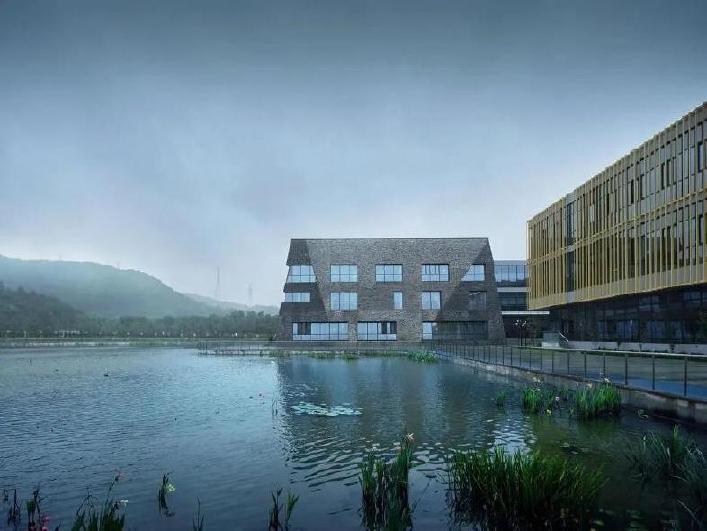Other plane and spatial layout (1) the trench should not be set in the plant.
set explosion-proof residual current electrical fire monitoring and alarm system and emergency power-off device D.
(2) the explosion-proof performance of electrical equipment shall adapt to the risk of substances in explosive hazardous environment; when there are more than two kinds of explosive hazardous substances in the area, the explosion-proof performance of electrical equipment shall meet the requirements of substances with higher risk.
Explosive gases, flammable liquids and flammable liquids, explosive dust or flammable fibers with a flash point lower than or equal to the ambient temperature are collectively referred to as explosive substances, which are divided into () Class A.
The fire prevention distance between class a warehouse and high-rise buildings and important public buildings shall not be less than 50m, and the fire prevention distance between class a warehouse and other civil buildings and open fire or spark emitting places shall be 25 ~ 40m according to the nature of stored articles.
A.20b.40c.60d.100 answer: C multiple choice 1.
Ordinary glass should be used.
2: K dust is the pressure propagation speed.
4D.
The explosion-proof room shall be arranged close to the outer wall as far as possible, so that the pressure relief area can be easily solved and it is also convenient for fire fighting and rescue.
Explosive dust environment is divided into () according to the frequency, duration and dust layer thickness of mixture Answer: cde2, an edible oil processing plant, plans to build a single-layer soybean oil leaching workshop, with a fire resistance rating of class I.
The power transformation and distribution station shall not be set in or adjacent to class A and class B plants with explosion risk, and shall not be set in the dangerous area with explosive gas and dust environment, so as to improve the safety of the plant.
The category and pressure relief ratio of explosive hazardous substances in the plant C (㎡ / M) ³) Ammonia, grain, paper, leather, lead, chromium, copper and other K dust < 10MPa · m · S-1 ≥ 0.030 dust of 10MPa · m · S-1 ≤ K dust ≤ 30MPa · m · S-1 such as wood chips, carbon chips, pulverized coal, antimony and tin ≥ 0.055 dust of 30MPa · m · S-1 such as acetone, gasoline, methanol, liquefied petroleum gas, methane, spray booth or drying room, phenol resin, aluminum, magnesium, zirconium and other K dust > 30MPa · m · s-1, ethylene ≥ 0.16 Alkyne ≥ 0.20, hydrogen ≥ 0.25 note 1: the length diameter ratio is the ratio of the longest dimension in the geometric overall dimensions of the building plane to the product of its cross-sectional perimeter and 4.0 times the cross-sectional area of the building.
Plants and warehouses with explosion hazards shall maintain a certain fire separation distance from surrounding buildings and structures.
(3) The power transformation and distribution station ① class A and class B plants are flammable and explosive places, and the transformers in operation may burn or burst.
(4) If one part of the single-storey plant with explosion risk is class A and class B production with explosion risk, in order to prevent or reduce the damage of explosion accidents to other production parts and reduce casualties, class A and class B production parts are required to be set close to the outer wall.
It is strictly prohibited to set up offices, rest rooms, etc.
② Class A and B warehouses shall not be set underground or semi underground.
flameproof type B.
The correct measures are () 。.
tightly seal the trench in the workshop with a cover plate B.
Section IV explosion Selection principle of electrical explosion-proof electrical equipment in hazardous environment (1) the explosion-proof form of electrical equipment shall adapt to the explosion hazardous area.
(4) it shall comply with the principle of overall explosion-proof, safe, reliable, economical and reasonable, and easy to use and maintain.
When the office and lounge must be built adjacent to the plant, their fire resistance rating shall not be lower than grade II, and shall be separated by explosion-proof walls with a fire resistance limit of not less than 3.00h and provided with independent emergency exits.
Layout of explosion hazardous plants and warehouses.
Plane layout (1) basement and semi basement ① class A and B production sites shall not be set underground or semi underground.
Among the following explosion-proof measures taken for the workshop, those that do not meet the requirements are () A.
Effective measures should be taken to prevent the accumulation of combustible gas, combustible steam, dust and fiber in the trench, and the connection with adjacent plants should be sealed with fireproof materials.
Section III structural explosion-proof pressure relief of explosion hazardous buildings – in the calculation formula of pressure relief area: a – Pressure relief area (M2); V— Volume of plant (m) ³); C— The plant volume is 1000m ³ Pressure relief ratio at (㎡ / M) ³), It can be selected according to table 2-8-1.
select explosion-proof electrical equipment suitable for the zoning and scope of explosion hazardous area B.
use a non sparking floor C.
Exercise 1.
Among the following options, the form of explosion-proof electrical equipment applicable to zone 0 is ().
(2) The building structure system with good explosion resistance shall be adopted.
ia class intrinsically safe type D.
(2) Class A, B and C liquid warehouses shall be equipped with facilities to prevent liquid dispersion.
② For the distribution substation of class B plant, such as the distribution station of ammonia compressor room, in order to observe the operation of equipment and instruments, observation windows need to be set, so they are relaxed appropriately, and class a protective windows made of incombustible materials and can not be opened are allowed to be set on the Firewall of the distribution station.
Pressure relief facilities can be light roof panels, light walls and doors and windows easy to relieve pressure, but light roof panels should be preferred.
Section I basic principles and measures of building explosion-proof mitigation technical measures (1) pressure relief measures shall be taken.
For example, the fire prevention distance of class a civil buildings shall not be less than 25m, the fire prevention distance with high-rise buildings and important public buildings shall not be less than 50m, and the fire prevention distance with open fire or spark emitting places shall not be less than 30m.
2B.
5 answer: B3.
(2) Offices and rest rooms shall not be set in class A and class B plants.
The workshop needs to be equipped with an intermediate warehouse of leaching solvent, a sub control room, an office and a special 10kV substation for production.
A.
In order to reduce explosion loss, the mass per unit area of light roof panel as pressure relief facility should not exceed () kg / m2.
2B.
set dust removal facilities answer: C2.
In the following basic measures for electrical explosion-proof in buildings, the wrong is () A.
4D.
3C.
5 answer: B5.
select electrical equipment according to the explosion-proof requirements of explosive gas in the area with explosive gas and dust at the same time C.
positive pressure type answer: C6.
(3) It shall adapt to the environmental conditions.
One of the ways to prevent liquid dispersion is to build a slow slope at the door opening of the barreled warehouse, and the height of the slow slope is generally not less than () mm.
increased safety type C.
electrical equipment and lines that will produce sparks and arcs during normal operation Place in an environment with little or no explosion risk answer: B7.
3C.
use a rough anti-skid floor D.
(3) Adopt reasonable architectural layout.
There is a trench in the filter element polishing workshop of a metal parts processing plant.
A.50b.100c.150d.300 answer: C4, explosive gas, combustible vapor and air are mixed to form an explosive gas mixture environment, which is divided into () according to its frequency and duration A.
Section II layout of explosion hazardous plant and warehouse scope of explosion hazardous area the scope of explosion hazardous area in explosive gas environment shall be determined according to the level of release source and ventilation conditions.
When it must be set, its cover plate should be tight.
in class A and class B warehouses, which shall not be built adjacent to each other.



